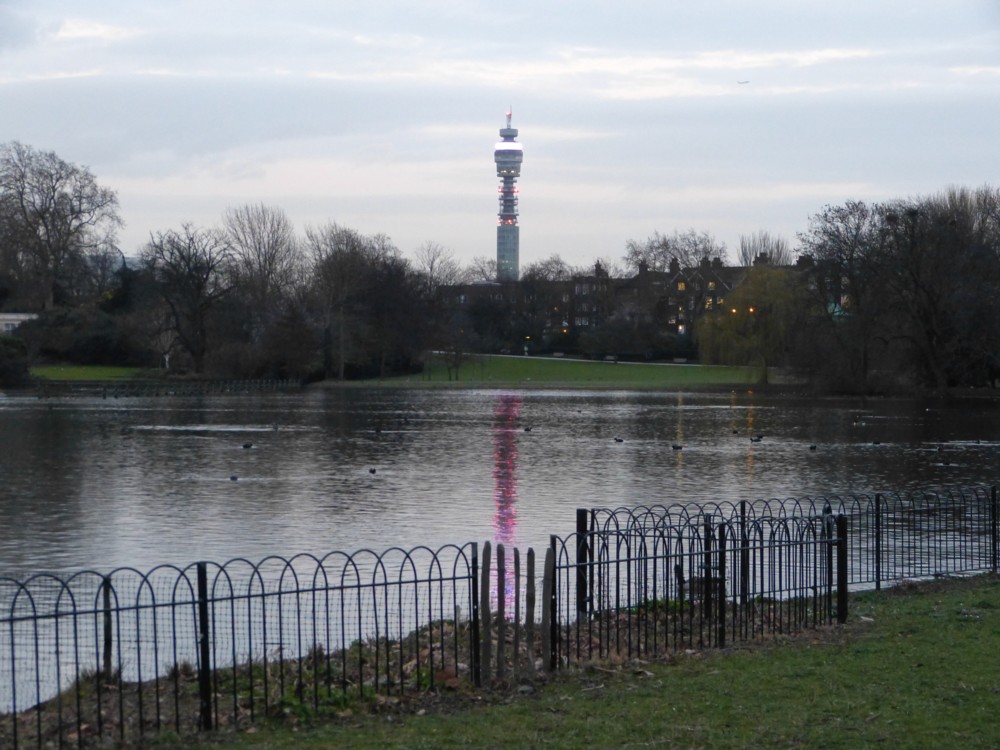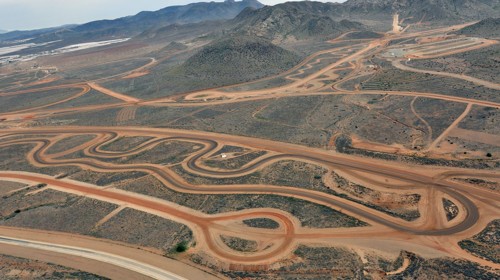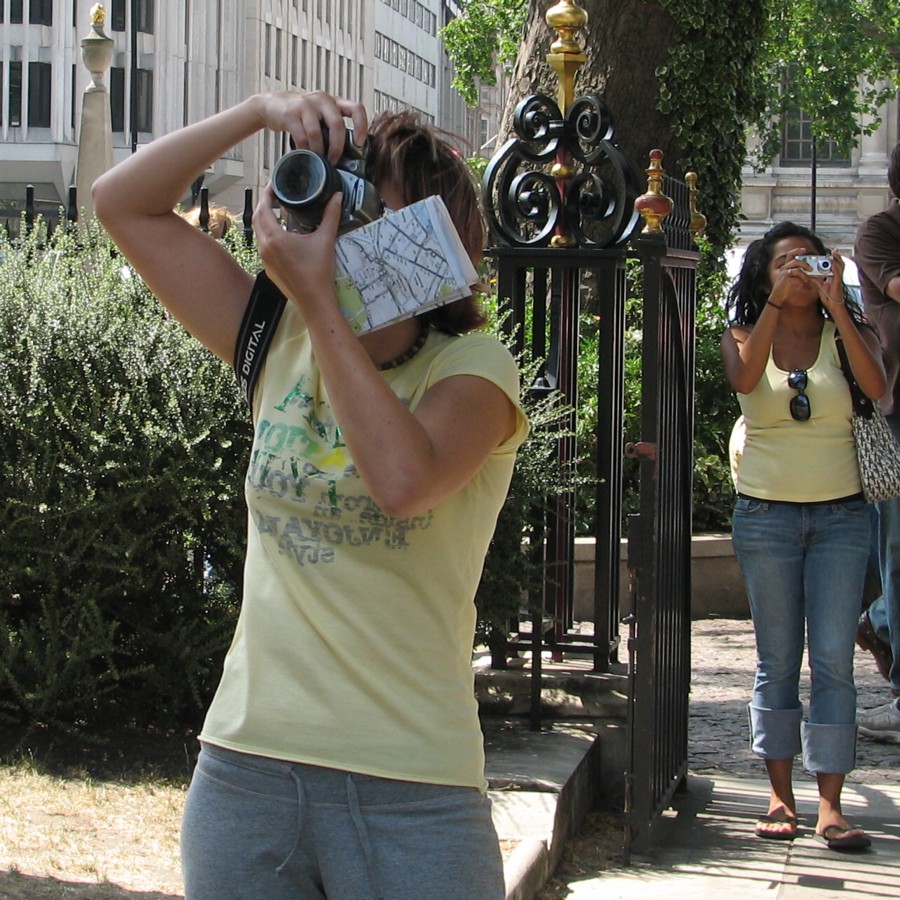I basically picked last night’s quota photo for alliterative reasons. QUota. QUantum. As we bloggers say: heh. No long essay was required to present that little joke, if joke it even was.
In the course of my search late last night for a suitable QP, I came across other photos which seemed suitable for showing here, but which demanded little essays to explain what it was that made them suitable. And I was too knackered for that, having spent yesterday working on this talk for Christian Michel’s 6/20 soiree, and then in the evening giving the talk.
In particular, late last night, I encountered in my photo-archives this remarkable (I think) photo, which I took in Regent’s Park in March of 2012, as it was getting dark, when on my way back from taking photos on and from Primrose Hill:

What I find remarkable about that photo is the contrast between how very red the reflection in the water of the lights on the BT Tower is, compared with how very un-red the actual lights themselves are, as photoed through the mere air.
You often get this with reflections. In photos, I mean. Your actual eyes make adjustments as they scan the scene. What I would have seen, with my eyes, when photoing the above photo, is quite bright red lights on the tower, and a similarly bright reflection.
But my camera, on automatic, doesn’t think like this. All my camera is concerned about is the overall balance. It has to pick just one balance and apply it to everything. And because a reflection is involved, it often ends up picking a balance where the actual view is very light and bright, but the reflection contains all the action. I often do this-and-this-same-thing-relected photos with a glass window doing the reflecting. And often what you get with that is a completely blank white sky, but then in the reflection you get all the distinctions between quite light and not so light, quite blue and not so blue, that you don’t get in the bit of the photo that is directly of the sky.
And that’s what surely happened with the above photo. The redness got lost when we were just looking at the lights themselves. But the water darkened and strengthened that same redness, and made it really red.
On the day, I was more interested in the birds swimming around on the water. The next eight photos in that directory are of ducks and geese, and the final three are of a swan. After that I called it a day, what with daylight having ended. I only really noticed this reflected redness thing last night.
Most Real Photographers have to have the skill of knowing at once when they’ve photoed a good photo, and why. We unreal photoers can take our time.



